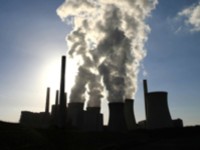Japan to Cut Emissions by 80 per cent
 A tentative plan to reduce the Japan’s greenhouse gas emissions by 80 percent of the 2005 level by 2050 has been revealed by the Japanese Ministry of the Environment, one of the pledges made at last month’s G8 Summit in L’Aquila, Italy.
A tentative plan to reduce the Japan’s greenhouse gas emissions by 80 percent of the 2005 level by 2050 has been revealed by the Japanese Ministry of the Environment, one of the pledges made at last month’s G8 Summit in L’Aquila, Italy. The plan aims to slash emissions while maintaining a GDP growth rate of 1-2 percent by replacing all cars with electric vehicles, and increasing electric power generated by solar panels by 120-140 times, amongst other measures.
“As a developed nation, an 80 percent reduction is our duty,” said Environment Minister Tetsuo Saito. “The only way for Japan to survive is by succeeding.”
The reduction is based on a 40 percent cut in overall energy usage, as well as widespread use of renewable energy, in two different scenarios: urban concentration and rural dispersion.
In the first scenario, priority is given to economic development, with funds and population concentrated in urban areas. Assuming a 2 percent yearly growth rate, renewable energy could account for 28 percent, with nuclear energy making up another 26 percent, if the capacity of generation facilities were improved by 120 times and 1.4 times respectively. It also proposes all conventional passenger cars be replaced with electric vehicles.
In the rural dispersion scenario, which assumes a 1 percent growth rate, population and capital is spread out over wider areas, and suggests that renewable energy could provide 40 percent of the nation’s energy needs if generation capacity is increased by 140 times, and generation capacity at nuclear power plants is increased by 1.2 times to provide 26 percent of the total energy needs. Half of passenger vehicles would be hybrid, with the other half electric.
In both cases, the use of public transportation is assumed to rise 10 points from its 2000 usage rate to 50 percent.
For More Information: Mainichi NewsYou can return to the main Market News page, or press the Back button on your browser.

